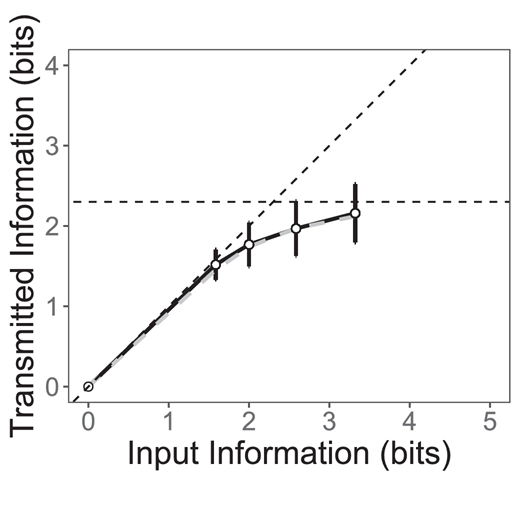Beauty isn't special: Comparing the information capacity of beauty and other sensory judgments

Abstract
Information theory (bits) allows comparing beauty judgment to perceptual judgment on the same absolute scale. In one of the most influential articles in psychology, Miller (1956) found that classifying a stimulus into one of eight or more categories of the attribute transmits roughly 2.6 bits of information. That corresponds to 7 ± 2 categories. This number is both remarkably small and highly conserved across attributes and sensory modalities. This appears to be a signature of one-dimensional perceptual judgment. We wondered whether beauty can break this limit. Beauty judgments matter and play a key role in many of our real-life decisions, large and small. Mutual information is how much information about one variable can be obtained from observing another. We measured the mutual information of 50 participants’ beauty ratings of everyday images. The mutual information saturated at 2.3 bits. We also replicated the results using different images. The 2.3 bits conveyed by beauty judgment are close to Miller’s 2.6 bits of unidimensional perceptual judgment and far less than the 5 to 14 bits of a multidimensional perceptual judgment. By this measure, beauty judgment acts like a perceptual judgment, such as rating pitch, hue, or loudness.
Type
Publication
Journal of Vision